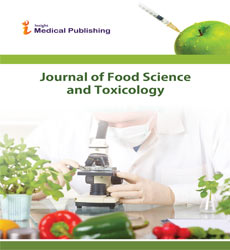Production and Profitability of Hybrid Rice Is Influenced by Different Nutrient Management Practices
Abstract
The government of Nepal has recommended blanket fertilizer application for rice cultivation,
which results in lower nutrient use efficiency (NUE) particularly under rainfed conditions.
With the aim of finding an appropriate nutrient management practices concerning rice
production and profitability, a field experiment was conducted during rainy season of 2017
and 2018 at Kavrepalanchowk and Dang district of Nepal. Altogether, five treatments
comprising various nutrient management practices viz. Nutrient Expert Model (NE), use of
Leaf Color Chart (LCC), Government Recommended Fertilizer Dose (GON), Farm Yard Manure
(FYM), and Farmers’ Field Practice (FFP), were laid out in RCBD with four replications in
farmers’ fields. The analysis of variance showed significant difference between treatments for
test weight and grain yield in Kavrepalanchowk whereas all traits except number of effective
tillers were significant in Dang. The significantly higher grain yield and harvest index were
obtained in NE, followed by LCC; and the overall straw yield was highest in LCC, followed by
NE in both the locations. Also, yield gap analysis suggested the NE had 44.44% and 23.97%
increase in yield as compared to FPP in Kavrepalanchowk and Dang, respectively. The
combined analysis with Best Linear Unbiased Estimator revealed the interaction of nutrient
management and location significantly effects the straw yield and harvest index across both
the locations. The estimated mean straw yield and harvest index were 10.93 t/ha and 34.98%,
respectively. Both correlation study and biplot of principal component analysis signaled grain
yield had positive correlation with all other traits. Furthermore, the net revenue was
maximum for NE, followed by LCC in both the locations. The benefit: cost ratio was highest for
NE which was 1.55 in Kavrepalanchowk and 2.61 in Dang. On the basis of these findings, NE
and LCC can be effectively used as nutrient management practice by the farmers to obtain
maximum production and profitability in Rice.
Open Access Journals
- Aquaculture & Veterinary Science
- Chemistry & Chemical Sciences
- Clinical Sciences
- Engineering
- General Science
- Genetics & Molecular Biology
- Health Care & Nursing
- Immunology & Microbiology
- Materials Science
- Mathematics & Physics
- Medical Sciences
- Neurology & Psychiatry
- Oncology & Cancer Science
- Pharmaceutical Sciences
